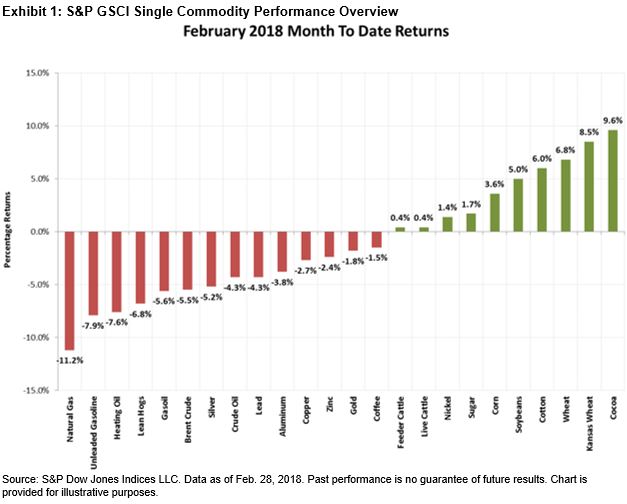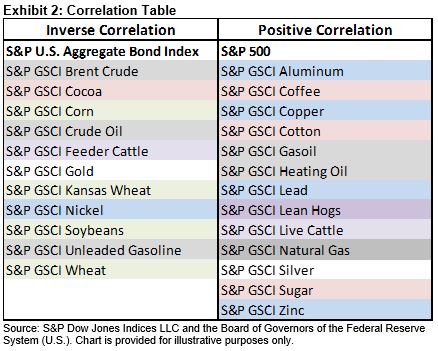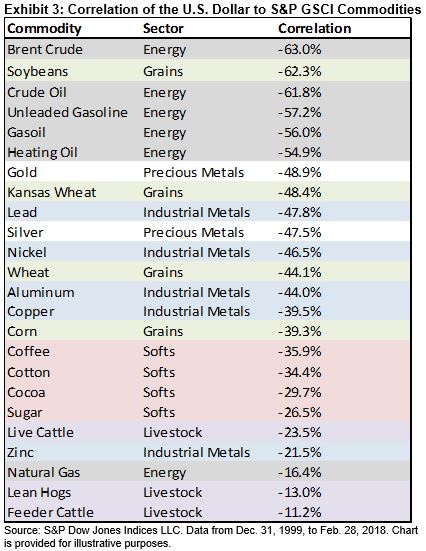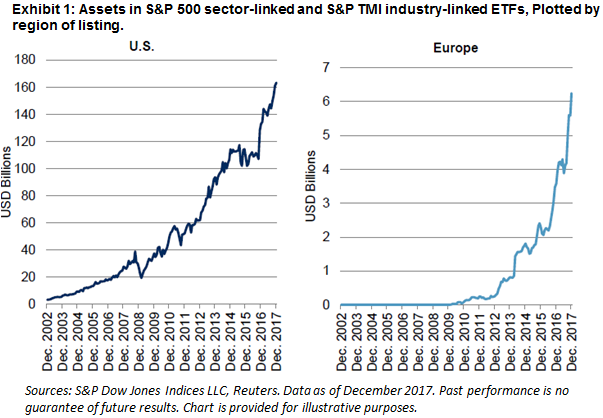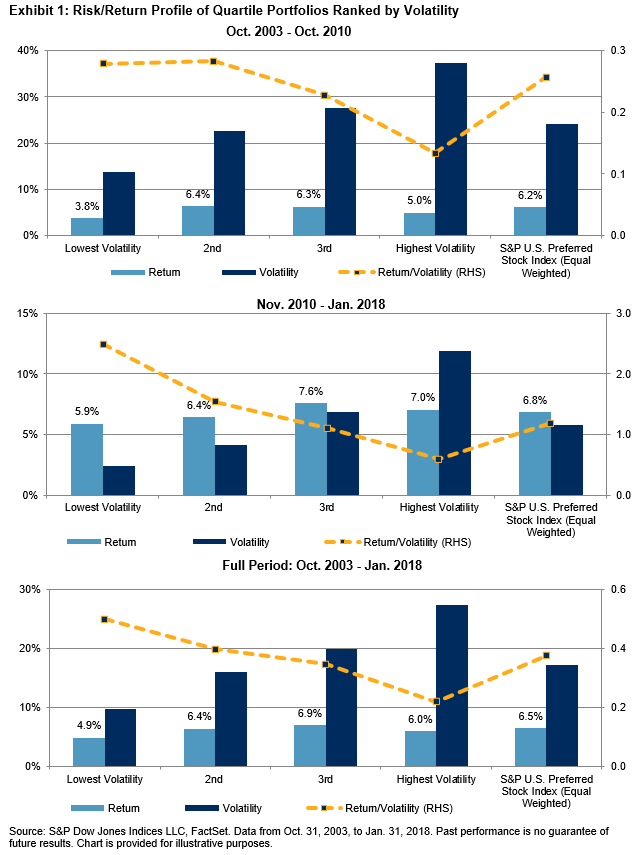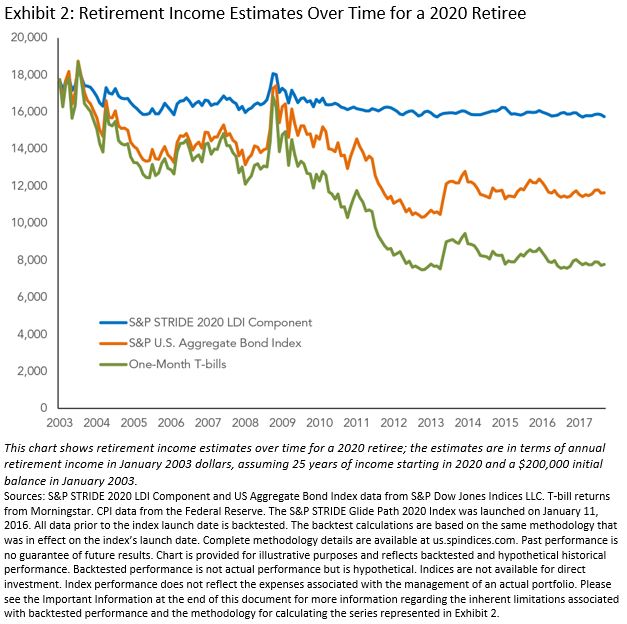This article is the third in a series of blogs. The previous two were titled “Factor Investing 101” and “How Do Single Factors Perform in Different Market Regimes in India?” This blog discusses sectoral tilts of different single factors and varying correlations between factors in different market cycles.
In our report, sector bias typically existed in factor portfolios, and differentials on sector exposure across factor portfolios were strongly associated with the unique cyclical nature of factor performance. Exhibit 1 highlights the two most overweight and most underweight sectors, on average, for each factor over the period from March 2006 to March 2017. Value and dividend were overweight in basic materials, whereas momentum, quality, and size were overweight in consumer discretionary goods & services. The finance sector was most underrepresented in the momentum, quality, low volatility, and size portfolios, and the information technology sector was underweight in value, dividend, and size portfolios.
| Exhibit 1: Sector Bias Versus the S&P BSE LargeMidCap | ||
| FACTOR | Most Overweight Sectors and Weight Differential (%) Versus Benchmark | Most Underweight Sectors and Weight Differential (%) Versus Benchmark |
| Value | Basic Materials, 13.7 | Information Technology, -10.9 |
| Energy, 7.7 | Fast Moving Consumer Goods, -8.1 | |
| Momentum | Healthcare, 6.2 | Finance, -6.0 |
| Consumer Discretionary Goods & Services, 5.4 |
Energy, -5.8 | |
| Quality | Fast Moving Consumer Goods, 9.6 | Finance, -22.9 |
| Consumer Discretionary Goods & Services, 9.0 |
Utilities, -4.0 | |
| Low Volatility | Healthcare, 11.1 | Finance, -16.9 |
| Fast Moving Consumer Goods, 6.8 | Industrials, -5.2 | |
| Dividend | Basic Materials, 10.8 | Information Technology, -7.0 |
| Energy, 4.2 | Healthcare, -4.7 | |
| Size | Utilities, 4.4 | Information Technology, -6.1 |
| Consumer Discretionary Goods & Services, 4.2 |
Finance, -5.2 | |
Source: S&P Dow Jones Indices LLC. Data from March 2006 to March 2017. The S&P BSE Dividend Portfolio and S&P BSE Equal-Weighted Portfolio are hypothetical portfolios. Figures in the table are average figures for the semiannually rebalanced portfolios. Past performance is no guarantee of future results. Table is provided for illustrative purposes and reflects hypothetical historical performance. Please see the Performance Disclosure in the report for more information regarding the inherent limitations associated with back-tested performance.
Despite some single-factor portfolios outperforming the market over the long term, they experienced periods of underperformance in different macroeconomic conditions depending on their cyclical characteristics, as noted in the previous blog. Therefore, blending factors to form multifactor portfolios may potentially help deliver smoother excess return across business and market cycles. Correlation among factors is a common consideration in the construction of multifactor portfolios. However, we observed that factor correlations did not remain constant across various market regimes, and it is important to be mindful of the changes when blending different factors in a portfolio. For example, correlation between size and momentum was negative (-43%) during bull and recovery markets, but switched to positive (32%) in bearish markets. Large shifts in correlation were also observed in the low volatility-momentum and quality-value pairs across different market cycle phases (see Exhibits 2 and 3).
| Exhibit 2: Correlation Among Single Factors – Recovery and Bull Market Cycles | ||||||
| FACTOR | VALUE | MOMENTUM | QUALITY | LOW VOLATILITY | DIVIDEND | SIZE |
| VALUE | – | -42% | -38% | -50% | 86% | 83% |
| MOMENTUM | -42% | – | 42% | 49% | -39% | -43% |
| QUALITY | -38% | 42% | – | 73% | -18% | -22% |
| LOW VOLATILITY | -50% | 49% | 73% | – | -31% | -39% |
| DIVIDEND | 86% | -39% | -18% | -31% | – | 82% |
| SIZE | 83% | -43% | -22% | -39% | 82% | – |
Source: S&P Dow Jones Indices LLC. Data from October 2005 to June 2017. The S&P BSE Dividend Portfolio and S&P BSE Equal-Weighted Portfolio are hypothetical portfolios. Correlation calculated using excess price returns over S&P BSE LargeMidCap. Index performance based on price return in INR. Past performance is no guarantee of future results. Table is provided for illustrative purposes and reflects hypothetical historical performance. Please see the Performance Disclosure in the report for more information regarding the inherent limitations associated with back-tested performance.
| Exhibit 3: Correlation Among Single Factors – Bear Market Cycles | ||||||
| FACTOR | VALUE | MOMENTUM | QUALITY | LOW VOLATILITY | DIVIDEND | SIZE |
| VALUE | – | 11% | 13% | -20% | 78% | 59% |
| MOMENTUM | 11% | – | -13% | -50% | 9% | 32% |
| QUALITY | 13% | -13% | – | 73% | 37% | 2% |
| LOW VOLATILITY | -20% | -50% | 73% | – | 9% | -4% |
| DIVIDEND | 78% | 9% | 37% | 9% | – | 53% |
| SIZE | 59% | 32% | 2% | -4% | 53% | – |
Source: S&P Dow Jones Indices LLC. The S&P BSE Dividend Portfolio and S&P BSE Equal-Weighted Portfolio are hypothetical portfolios. Data from October 2005 to June 2017. Correlation calculated using excess price returns over S&P BSE LargeMidCap. Index performance based on price return in INR. Past performance is no guarantee of future results. Table is provided for illustrative purposes and reflects hypothetical historical performance. Please see the Performance Disclosure in the report for more information regarding the inherent limitations associated with back-tested performance.
Please refer to Factor Performance Across Different Macroeconomic Regimes in India for more information on this research paper.
The posts on this blog are opinions, not advice. Please read our Disclaimers.



